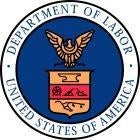Today, April 9, represents the day in 2013 that women finally make up the difference in wages paid to their male counterparts during 2012. That’s right: Women have to work almost four more months than men in the same jobs to bring home the same amount of income.
Equal pay for equal work is, and should always have been, common sense. But in 2013 − 50 years after the signing of the Equal Pay Act − true parity is still elusive even though women currently make up nearly half the workforce and their earnings account for a significant portion of household income.
By one measure, the gap stands at about 18 cents difference per dollar, a figure based on an approach that uses weekly earnings data. The most common estimate is based on differences in annual earnings, about 23 cents per dollar. Whichever figure you look at, what’s truly troubling is that when women start at a disadvantage, they stay at a disadvantage. Over the course of a woman’s career, those lost wages can add up to hundreds of thousands of dollars. For women of color, the wage gap is even larger.
For millions of working women, the gap means less income to pay for necessities like housing, clothes and food. It’s less income to pay for their children’s education. And it’s less to go toward retirement. All of these reasons make equal pay more than just a women’s issue; it impacts families, communities − the whole economy.
Some people say that the pay gap is a myth, or it can be explained away entirely. But the reality is that it persists, even when other factors are accounted for. That’s why our work to inform employers about impact of pay inequality, and our efforts to equip working women with the tools they need to access accurate information about pay, is so critical.
To help accomplish this, we’ve created brochures to educate employees about their rights under the existing equal pay laws and enable employers to understand their obligations. To meet the diverse needs of today’s workforce, we translated the brochures into Spanish, Chinese, Vietnamese and French. With the help of the Bureau of Labor Statistics, we also updated fact sheets that highlight women’s earnings nationally and by region. Additionally, we hosted a competition last year to develop smartphone apps to empower women to stand up for their right to equal pay.
To learn more about steps to close the pay gap taken by the department’s Women’s Bureau and its Office of Federal Contract Compliance Programs, join us for a Web chat this Friday, April 12, at 1 p.m. EDT. The department’s chief economist, Dr. Jennifer Hunt, also will be available to answer questions about current statistics and the gap’s economic impact.
You can also join us at 4 p.m. EDT today for an Equal Pay Day webinar with special guest speaker Martha Burk. If you live near Boston, join us April 10 for a forum to raise awareness about the current wage gap and the importance of women’s economic security and self-sufficiency.
Let us use this day as an opportunity to renew our commitment to ending the real and persistent problem of wage discrimination. Let’s use our voices to speak up and speak out for fairness and equality in all of our workplaces and for all of our communities.


 />i
/>i

